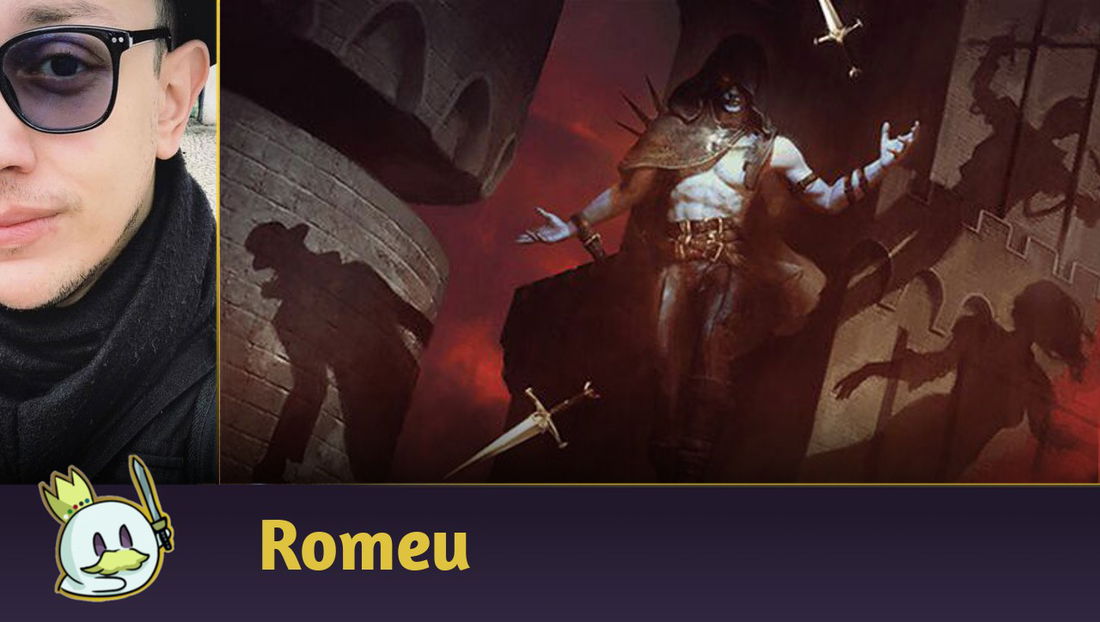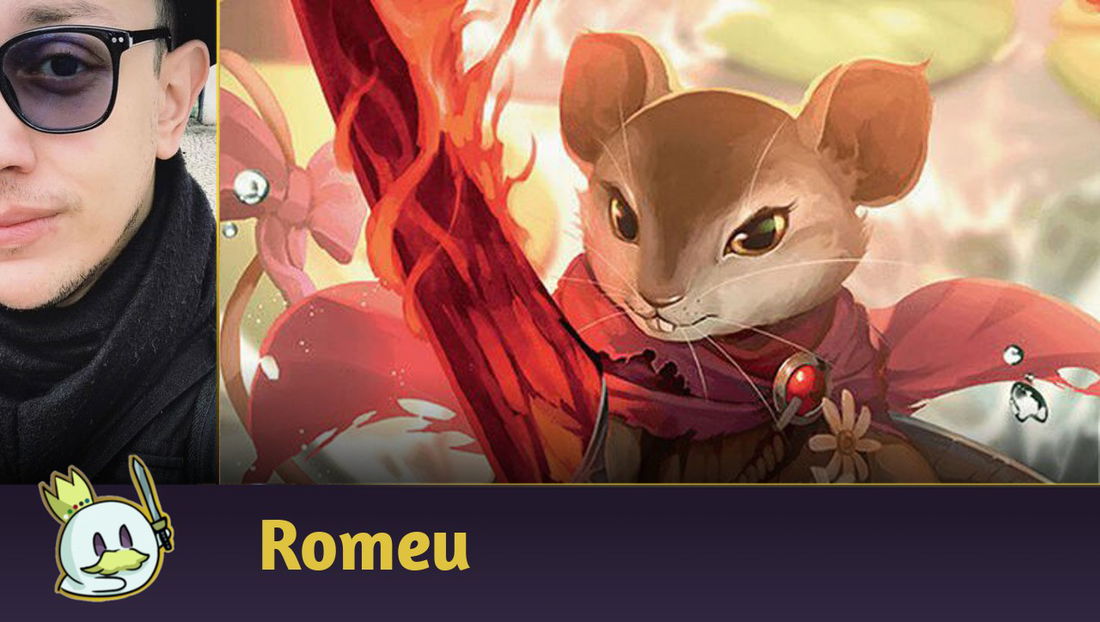Pauper usually requires very impactful additions to affect its Metagame, but they have been happening more frequently than usual: from Experimental Synthesizer in Kamigawa: Neon Dynasty to the Initiative cards in Battle for Baldur’s Gate, the format has received increasingly strong commons for its competitive scene.
Modern Horizons 3 was no different: the MH expansions are known for the negative impact they had on Pauper with cards like Chatterstorm and Arcum’s Astrolabe, but the third set of the series breaks away from that pattern and, overall, helped diversify a Metagame that was mostly focused on four or five decks - Grixis Affinity, Kuldotha Red, Madness Burn, Caw-Gates and Dimir/Mono Blue Terror.
While most of these remain in the Meta, the presence of Writhing Chrysalis has catapulted Gruul Initiative into one of the three most played decks in the format, while a new creature-based combo has emerged with Basking Broodscale, creating an archetype that now represents a significant fraction of the Metagame and has similar presence in numbers to Grixis Affinity.
Combos have a history in Pauper, and Basking Broodscale has grown to the point of raising questions about its future in the format - after all, it is a virtually two-piece combo that has achieved notorious results - and in this article, we seek to explore the archetype a little more, its advantages and weaknesses, and the risks it presents to the Metagame that could eventually lead to a ban.
Building the Broodscale Combo

The Broodscale Combo is based on the interaction between Basking Broodscale and Sadistic Glee, where the creature puts a 0/1 Eldrazi token into play whenever it gains a counter while the enchantment puts a +1/+1 counter on the enchanted creature whenever another creature dies. With both, you simply sacrifice the token to generate mana and start a loop that ends in infinite mana and infinite power for Broodscale.
Malevolent Rumble is essentially the third piece of the combo because it helps you dig for any of them while placing the Eldrazi token to start the loop without needing another mana investment.
What makes this combo so consistent, however, is how easy it is to find the pieces and protect itself.

Since it is essentially a turn-kill (especially when used alongside cards like Bloodrite Invoker or Nadier’s Nightblade), players only need to worry about keeping their pieces protected during the combo, so keeping copies of Duress and Tamiyo’s Safekeeping or setting up the terrain with Mesmeric Fiend helps to maintain its consistency. If necessary, Evolution Witness can bring the pieces back and start the loop.

And to dig deeper and find its resources, the deck runs the already known package of Deadly Dispute with Ichor Wellspring and Chromatic Star, transforming the card into an Ancestral Recall and still benefiting from interactions with the Eldrazi tokens and/or Mesmeric Fiend (since there are two different trigger instances, it is possible to sacrifice it with Dispute with its first trigger on the stack to exile a card from the opponent's hand permanently).
Based on the above patterns, you end up with a list similar to what the player PauloCabral_Br used to reach second place in the Pauper Challenge on August 18th. An all-in combo with consistent mana and a game plan that forces opponents to spend too many resources preparing for your key play, but which has inherent weaknesses.
But combos tend to evolve. Over time, the Metagame adapts, and they need to adapt to the Metagame if they want to continue winning. All-in-oriented pieces go out and more consistent cards for interactive games come in, backup plans emerge in case the combo goes wrong and, little by little, a new deck is born with a game plan aimed at combating a format aimed at combating your combo.
The Jund Broodscale is not exactly this case, although it is a specific answer to some of the problems in the Golgari versions, and it seems like just the first new step for a proposal that has been in the format for less than three months.
Responding to Broodscale Combo

Since it is completely creature or permanent-oriented, the main ways to respond to Broodscale Combo are with board interactions. Cards like Snuff Out, Cast Down, Galvanic Blast, and others can deal with Basking Broodscale for a low cost while Thraben Charm, Deglamer and any other Disenchant answers Sadistic Glee.
This plan doesn't always work because our opponent can respond with Tamiyo's Safekeeping or “counter” our removal with Duress or Mesmeric Fiend, so we can resort to other means.

Standard Bearer is the best cheap answer to deal with linear plans involving targets and enchantments in Pauper and requires a side-in of Snuff Out or any removal to continue with the combo, being also a very palliative measure because we need to add it with a fast clock or use the “extra turns” it guarantees to accumulate more answers, being ideal for decks like Caw-Gates or Boros Synthesizer.
Counterspells, on the other hand, are an ideal response because they reduce the scope of the opponent's interactions and respond better against them as well: Tamiyo's Safekeeping doesn't work against an Annul and Spell Pierce can respond to both Duress and Sadistic Glee, so its versatility ends up compensating for the lack of board interaction.

We can also try to remove key pieces with targeted discard, but like any Deadly Dispute deck, Broodscale Combo draws more cards than we can discard, so that's the worst game plan against it.
And if none of these plans work for you, just be faster. After all, we're talking about an archetype that dedicates too much space to protecting itself and almost no space to interacting with the opponent's game plan.
The State of Pauper and the August 26th Bans
Next Monday, August 26th, we'll have a banned and restricted update for the major competitive formats. It's likely that all non-rotating environments will be affected in some way: Grief in Legacy, Nadu, Winged Wisdom in Modern, and Amalia Benavides Aguirre and Sorin, Imperious Bloodlord in Pioneer are the main cards in the potential bans' crosshairs next week - but what about Pauper?
The first case we've always needed to address since Modern Horizons 2 is Affinity. At this point, we can already see it in a position in the Metagame that previously belonged to Faeries and the other Blue-Based Tempo decks: it's here to stay, it will almost always be one of the best decks in the format, and it will need interventions whenever a new card strengthens it too much, but it shouldn't leave the top any time soon until another power creep wave takes over Pauper.
The problem is that Affinity, since it's centered on an inherently broken mechanic, is very easy to unbalance. Any more efficient artifact, Galvanic Blast 5 to 8, Deadly Dispute on steroids or attempts to interact with its ability will eventually create a more polarized environment - but except for the first announcement of the PFP, the committee's pattern of interventions doesn't seem so abrupt as to change the structure of Pauper and Affinity without needing to fix a broken deck.
This also applies to another element of the format's contemporary nature: the increased presence of red decks. In this case, it is necessary that the Metagame is leaning too much towards speed with cards like Monastery Swiftspear to the point that games are much less interactive than they should be.
In the first weeks of MH3, there was concern about the increased popularity of Madness Burn and how it, along with Kuldotha Red and Affinity, were at the top, but the format adapted, Gruul Ramp and Broodscale Combo kept up with the Metagame's progress and Mono Blue Terror occupied a privileged space by answering all the main archetypes sufficiently well.

The only card that all three red decks share that we can say is “a bit above the curve” is Galvanic Blast - an improved Lightning Bolt whose tradeoffs have become negligible in Pauper, but given its flexibility and role in the Metagame today, I believe the card is much closer to the category of answer than a threat to the format.

The answer category also includes dealing with Broodscale Combo for a low cost, whose results have been growing in Pauper and, consequently, has raised awareness about the potential risks that the archetype could bring to the Metagame in the future. Risks that involve, as mentioned above, the potential for it to evolve more to the point where it can easily deal with the strategies trying to deal with it.
The evolution of combos occurs frequently in various formats. For example, a deck might adopt a more efficient plan B, or forgo more linear pieces in favor of a more interactive game plan, or find ways to speed up the combo earlier than it should. It can switch to a Midrange with combo-kill, look for shells from other decks to make a more linear hate more difficult, or just adopt cards that make the hate more difficult, among several options that occur as weeks or months go by.
Pauper has a little more difficulty in this regard due to the limitations of card availability and mana base, but it is not completely immune to these situations: in 2019, I mixed the Tireless Tribe and Inside Out combo in Jeskai Ephemerate because I was already drawing so many cards with Mulldrifter and managed to establish a clock with it and Kor Skyfisher that I didn't need Gush to threaten the combo-kill and could easily remove these pieces in Game 2 to follow the Midrange plan with my Sideboard if needed.

I used this same logic a year before with Kiln Fiend and Temur Battle Rage in Rakdos Monarch lists, and the entire format did the same with Atog when Modern Horizons 2 came out. As an interaction of two cards whose functions as other complementary pieces migrate to other decks, Broodscale Combo could eventually reach that level of deckbuilding, and if it does, an intervention is very likely.
Today, the results of the Challenges indicate the growth of Broodscale Combo, but they are not yet at the point where it is an immediate concern in the format: Kuldotha Red, Mono Blue Terror, and Golgari Gardens have the tools to keep the archetype in check, and their numbers do not yet represent the state of a polarized format.
Any ban next Monday would most likely be out of caution, and PFP doesn't act preemptively frequently, except when something is so inherently broken that it shapes the entire format. With Duskmourn previews coming up, it's likely that the committee will opt to wait and see how the Metagame develops with the new set, and we'll see a "no changes" for Pauper on August 26.
Ending
That's all for today!
If you have any questions or suggestions, feel free to leave a comment!
Thanks for reading!













— commentaires 0
, Réactions 1
Soyez le premier à commenter